Excerpts from Jim Conrad's
Naturalist Newsletter
from the September 24, 2017 Newsletter issued from Rancho Regensis north of Valladolid, Yucatán, MÉXICO
LITTLEWOMAN, THE MINT
Another blue-flowered herb, specializing in trail edges in especially shady, moist woods, is the one shown below:
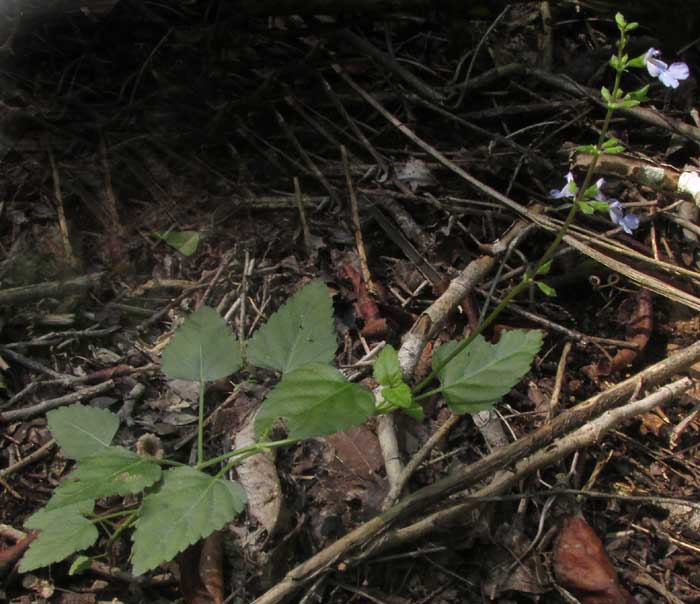
To many wildflower lovers the plant's sawtoothed leaf margins, the leaves arising opposite one another along the stem, and the dog-faced, strongly bilaterally symmetrical corollas, mean that this well may be a member of the Mint Family, the Lamiaceae. Below, a closer look at some flowers shows typical mint blossoms:
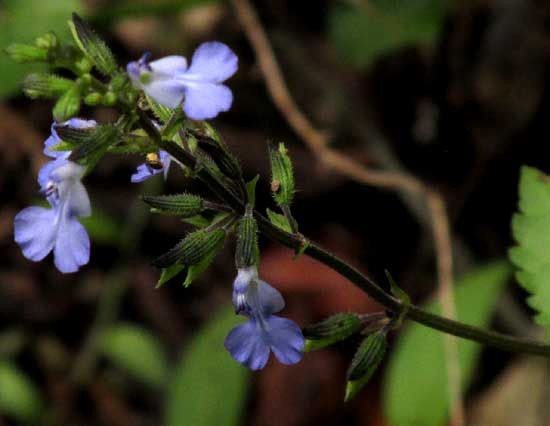
Closer up still, below, a blossom shows how nicely designed it is to accommodate pollinators:
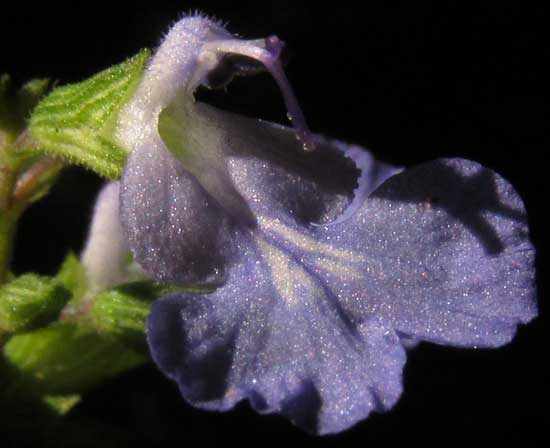
The pollinator, probably a bee, lands on the ±horizontally held lower lip. White lines serve as "nectar guides" to direct the visitor into the corolla's throat where nectar is available. When the pollinator enters the corolla tube the two stamens held against the tube's ceiling are fixed so that as the pollinator pushes inward a kind of lever is pushed so that the stamens tilt downward, dousing the pollinator's back with pollen. Belowy, you can see the two stamens arising with the purple-tipped, curved style between them:
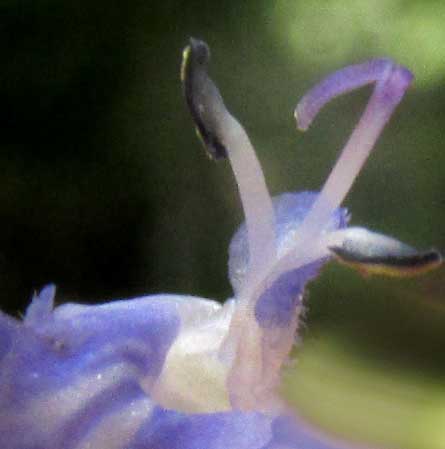
Finally, if you need absolute proof that you have a Mint Family member, you can break open a calyx from which the corolla has fallen after pollination, and see what's shown below:
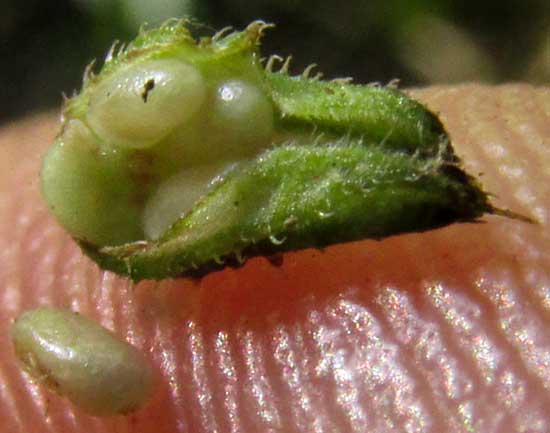
Ovaries in the Mint Family normally are at least somewhat divided into four parts, and in many species the parts are separate, forming four "nutlets," as shown above. Each nutlet contains a seed.
Despite this plant's common occurrence and distinctive features, I'm unsure which name to give it. The plant nicely matches what CICY, the "Center for Scientific Investigation" in Mérida, calls Salvia fernaldii. CICY, which usually is very up-to-date, considers Salvia fernaldii to be endemic only to the Yucatan Peninsula, and therefore worthy of attention for conservation purposes. However, most authors regard Salvia fernaldii as merely a synonym for SALVIA SEROTINA, which is much more widely distributed, from Florida and the Caribbean area south through Mexico into Panama.
Whatever its taxonomic status, in English sometimes it's known as Littlewoman, surely because of its elegant blossoms.
On the Web, Littlewoman's leaves are said to be aromatic. They do smell a little but I'd not call them aromatic. In the Bahamas, Littlewomen is used to treat gastrointestinal problems, colds and fevers, and dermatological problems.